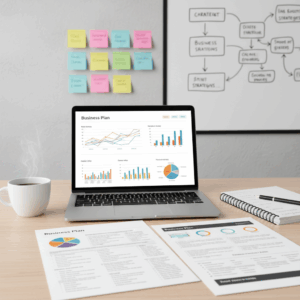Basic concepts about public debt
The public debt It represents the sum of financial obligations acquired by a State to finance its expenses. It is a key instrument for economic management.
Its importance lies in the ability to influence the economy, both to stimulate short-term growth and to affect long-term fiscal sustainability.
Understanding its basic concepts helps assess its impacts and risks, facilitating responsible and effective management that promotes development.
Definition and main characteristics
Public debt is the total amount a government owes to domestic or foreign creditors. It is characterized as a liability requiring interest and amortization payments.
It can be internal or external, and its proper use It can finance productive projects, stimulating the economy. However, too much can be harmful.
Furthermore, debt management must consider deadlines, costs, and conditions to maintain fiscal balance.
Elements that affect its sustainability
Debt sustainability depends on the level of debt relative to GDP and the state's ability to meet its payments without impacting the economy.
Factors such as economic growth, interest rate and fiscal policy directly impact the debt viability in the medium and long term.
Excessive debt can generate fiscal risks, increase financial costs, and limit public and private investment.
Effects of public debt on economic growth
Public debt can stimulate the economy in the short term by increasing public spending, which boosts aggregate demand. This boost can temporarily encourage investment and consumption.
However, its effect is not always positive; the impact on growth depends on how and for what purpose the funds obtained through state borrowing are used.
It is essential to evaluate both the immediate benefits and potential future costs to understand the real impact of public debt on the economy.
Short-term impact on demand and investment
An increase in public debt allows the government to finance projects and programs that rapidly increase aggregate demand. This can boost consumption and productive investment.
Furthermore, expansionary fiscal policy stemming from debt can reduce unemployment and improve business confidence, spurring new investment. However, this dynamic is temporary.
The risk is that if spending is not directed toward productive activities, the increased deficit could generate imbalances and inflationary pressures.
Medium and long-term consequences
As debt increases, interest payments consume public resources that could be allocated to investment. This limits the ability to finance projects that generate sustainable growth.
Furthermore, high debt can crowd out private financing, reducing business investment and affecting productivity and innovation in the long term.
Excessive debt can also increase fiscal vulnerability, limiting the flexibility to respond to economic shocks.
Fiscal and macroeconomic stability risks
Improper management of public debt can lead to fiscal imbalances, increasing the deficit and raising the interest burden, which affects the country's financial health.
This could undermine market confidence, increasing interest rates and making future financing difficult, threatening macroeconomic stability.
Furthermore, when debt is financed through monetary issuance, there are high risks of inflation, which can destabilize the economy and the national currency.
Factors that determine the influence of debt
The impact of public debt on the economy depends on how it is managed and the country's fiscal and economic context.
Proper management and a sound fiscal environment can enhance the benefits of borrowing, while adverse conditions can amplify its risks.
Therefore, understanding these factors is key to ensuring that debt drives, rather than hinders, economic development.
Proper management and use for productive investment
Responsible debt management involves allocating resources to productive investments that generate growth and employment, maximizing economic returns.
Investing in infrastructure, education, and technology can increase productivity and a country's ability to generate future revenues that facilitate debt repayment.
In this way, debt becomes a tool for development rather than a fiscal and economic obstacle.
The balance between new debt and amortization is essential to avoid unsustainable levels that affect financial stability.
Fiscal context and national economic policies
The fiscal context, such as the level of public revenue and the rigidity of spending, determines the State's ability to manage and sustain its long-term debt.
Coherent economic policies, aimed at macroeconomic stability and spending efficiency, enhance debt sustainability.
Likewise, fiscal credibility and transparency in public administration influence interest rates and market confidence.
Interesting fact about debt management
Countries with solid fiscal frameworks and debt control mechanisms often have access to financing on better terms, reducing the overall cost of debt.
This demonstrates that prudent fiscal management is key to maintaining confidence and avoiding crises related to excessive debt.
Implications for stability and development
Maintaining public debt at sustainable levels is essential to ensuring economic stability and promoting balanced development over the long term. Debt decisions must consider the fiscal and social impact.
Responsibly managed debt preserves market confidence and facilitates access to financing on favorable terms, thus contributing to sustainable and stable economic growth.
Importance of maintaining debt at sustainable levels
Debt sustainability means the State can meet its obligations without compromising public spending in key areas such as health, education, or infrastructure. This protects social stability.
When debt is kept within prudent limits, excessive increases in debt service, which reduce resources for productive investment, are avoided, maintaining a positive cycle of economic growth.
Fiscal stability and financial confidence are pillars supported by adequate levels of public debt, and are essential for crisis prevention and fostering optimal development conditions.
Possible crisis scenarios and limitations to growth
Excessive debt can lead to fiscal crises where the state faces difficulties in repaying its debt, generating uncertainty and reducing both public and private investment.
These scenarios include rising interest rates, reduced social spending, and limitations on financing projects that promote development, negatively impacting economic growth.
Furthermore, negative market perceptions could worsen the financial situation, triggering a spiral of debt and restrictions that limit the country's economic future.






